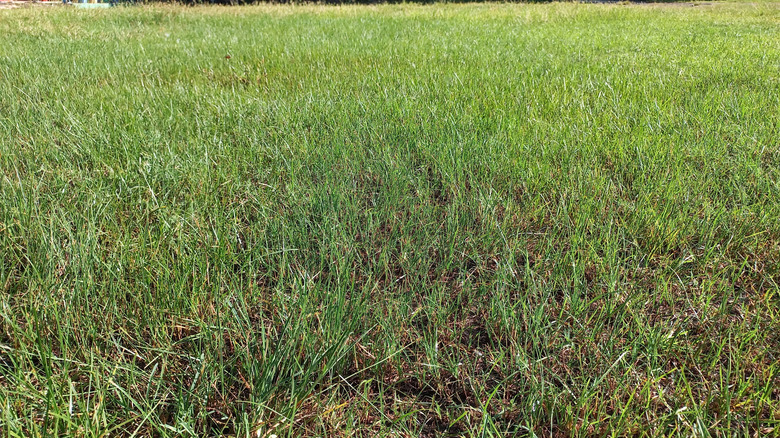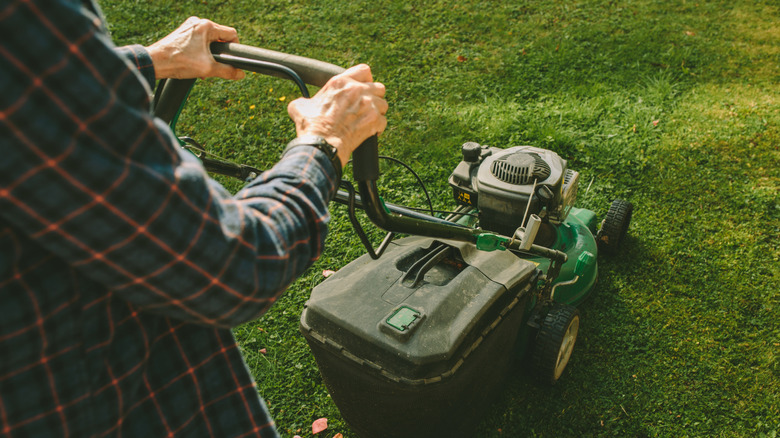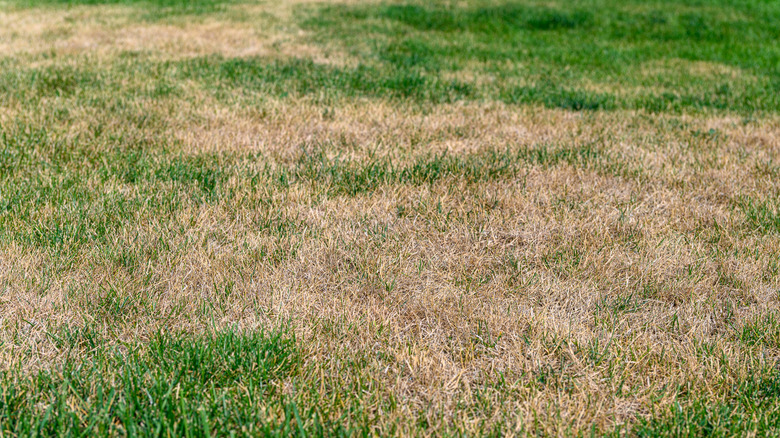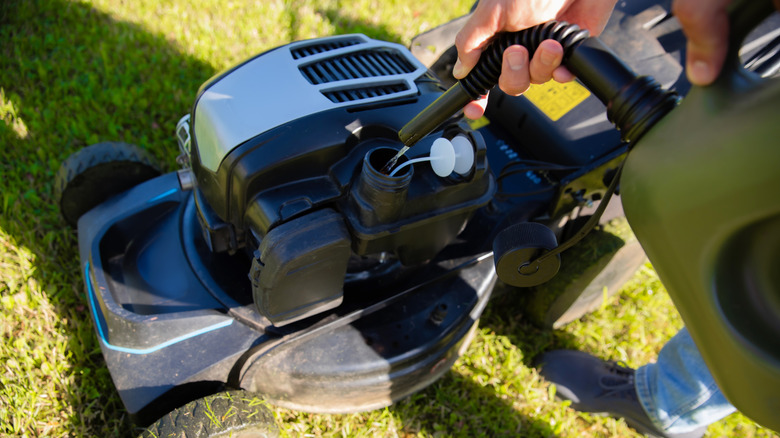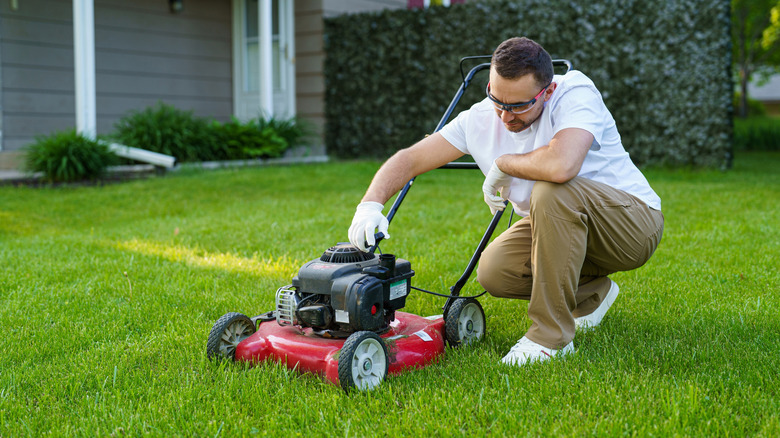Warning Signs That Indicate Your Lawn Mower's Blades Need Sharpening
A freshly manicured lawn is a point of pride for many homeowners. Not only can a yard full of beautiful grass turn heads, but a well-cared-for lawn can also increase property values by up to 20%. Unfortunately, though, a lawn mower with dull blades can turn your vision of a picture-perfect landscape into a nightmare. And if you can't even remember the last time you sharpened your lawn mower's blades, that nightmare could turn into your reality.
In addition to leaving your lawn looking less than desirable, repeatedly cutting your grass with dull blades can be bad for both your lawn mower and your grass. Needless to say, skipping this bit of routine maintenance can have serious consequences. But how can you tell when your blades have gotten dull? The good news is that there are some things you can look out for. Let's take a look at some of the warning signs that indicate your lawn mower's blades might need to be sharpened.
Your grass is looking a little uneven
Is your grass looking a little uneven after its latest cut? If the answer is yes, there's a good chance that your lawn mower blades aren't as sharp as they should be. When your lawn mower blades are dull, it can result in grass being torn, instead of cleanly sliced, which can lead to a jagged and torn appearance. Lawn care experts recommend sharpening your blades after 25 hours of moving, which equates to about once or twice per year. And if you happen to run over a rock or something similarly hard, that's another good time to sharpen the blades.
While dull lawn mower blades can be the king culprit of unevenly cut grass, this can also happen due to other reasons, including issues with your lawn mower's tires and a misaligned lawn mower deck. It's also important to note that mowing wet grass can also result in an uneven cut, because water causes the grass to bend and be weighed down. On the surface, an uneven lawn may seem like a purely aesthetic problem, but it can actually have negative consequences for your grass' health. When grass is cut unevenly, it can eventually impact the health of your grass. According to experts, torn grass blades are at a higher risk of contracting fungal infections and other harmful diseases.
Pushing your lawn mower requires a lot more work than it used to
When its blades are dull, your lawn mower has to work harder to cut through your grass, and so do you. Let's face it, mowing the lawn is already a pretty intense chore, so the last thing you need is dull blades making it worse. In addition to the extra effort that it takes, repeatedly mowing with dull blades can put additional wear and tear on your lawn mower. For example, dull blades increase the workload on your lawn mower's engine, which can lead to costly repairs.
Although dull blades are a likely cause for making your lawn mower harder to push, it isn't the only thing that could be responsible. Poor lubrication could also be the problem. Experts recommend greasing your spindles once a month if you regularly mow. However, the schedule ultimately depends on the type of lawn mower you have and how often you use it.
Discolored grass isn't just a reflection of your watering habits
Green grass is always the goal, but unfortunately for some, it's not always the reality. When grass is patchy and discolored, it's easy to assume that it's because of poor watering habits. However, that isn't always the case. In fact, if you've been struggling to maintain a healthy green lawn, and no amount of watering seems to work, you might want to take a look at the blades on your lawn mower.
Cutting your grass with dull blades can also cause discoloration. As mentioned earlier, dull blades can damage your grass and make it more susceptible to fungus, disease, and pests, which can affect the health of your lawn. Additionally, mowing with dull blades that lead to moisture loss directly, as torn blades don't retain moisture as well as cleanly cut ones. This can result in your grass drying out and potentially dying. While having discolored grass may feel like the end of the world, doing things like adding nutrients to your grass can bring your dying lawn back to life — in addition to sharpening those mower blades, of course.
You end up with a clumpy cut
Have you ever spent a beautiful Saturday afternoon mowing your lawn, only to finish and see your yard covered in clumps of grass and dirt? If so, it might be time to sharpen (or replace) those lawn mower blades. When the blades get too dull to easily cut through grass, they can catch on to your grass and rip it out of the ground. When grass is torn from the ground, especially in this rough manner, it can impact the long-term health of your lawn by weakening and damaging the blades, increasing the chance of diseases. Plus, no one wants an unhealthy and patchy-looking yard.
Dull blades are a likely cause for clumps in your lawn, but they aren't the only thing that could be responsible. Some of the other factors that can result in your mower pulling out clumps of grass include your mower set to an incorrect mowing height (generally, the recommended cutting height is between 2 1/2 and 3 1/2 inches), mowing wet grass, and the presence of a thick layer of thatch (anything thicker than a 1/2 inch) between your grass and the soil.
You noticed decreased fuel efficiency
If you have a gas-powered lawn mower, and you've noticed that your mower is guzzling gas more than it used to, dull blades could be the reason. When your blades are dull, and your lawn mower has to work harder to try to get the job done, wear and tear aren't the only things you have to worry about. Dull blades can also result in your lawn mower using up to 20% more fuel. Not only does a gas-guzzling lawn mower mean more money out of your pocket, but it can also cause increased air pollution.
In addition to checking your mower's blades, you might also want to take a look at the rest of your lawn mower's fuel system if you're noticing an increase in gas consumption. Other issues, such as a clogged air filter, a damaged fuel line, and a dirty fuel filter, can also lead to your lawn mower needing to be gassed up more often.
Having to mow the same spot more than once
When you're cutting the grass, one pass should get the job done. Of course, there might be exceptions depending on the type and length of your grass. Additionally, you may choose to double-cut your grass in order to create stripes and patterns in your lawn or to remove excess clippings. However, in general, you shouldn't have to mow the same area more than once. If your lawn mower isn't giving a good, even cut the first time through, it could mean that your blades aren't as sharp as they need to be.
While mowing the same spot twice might be fairly harmless at first, doing so repeatedly, especially with dull blades, could put serious stress on your lawn. Experts recommend limiting double-cutting when possible, as it can stress your lawn. If you do decide to double-cut your grass, it's a good idea to raise the mower height and mow in a different direction on the second go-round.
Visible damage to your blades
One of the best ways to make sure your lawn mower's blades are in tip-top shape is by simply looking at them. If you think that the blades may be dull, it's a good idea to inspect them for any kind of damage. Things like rounded edges, chips, and rust can hinder the blades' ability to give your grass the perfect cut. When blades are damaged, they can also become unbalanced, which can lead to your lawn mower vibrating when in use.
It's good practice to check your blades before each mow and clean and dry them after. On top of looking at your blades, a visual inspection can also reveal if there is any dirt or debris that could damage your mower. Once blades become damaged (think significant cracks or bends), it's time to change them. It's important to remember that even if your blades don't appear damaged, it's still a good idea to change them about every three to five mowing seasons. That said, how often you change your lawn mower blades is dependent on how often you mow your grass and the quality of your current blades. Fortunately, buying new lawn mower blades is an expense that won't break the bank. New blades can be purchased for less than $30.
Your lawn mower keeps stalling
When a lawn mower stalls, it's easy to automatically assume there is an issue with the engine. And while that could possibly be the case, the root of the problem could actually be dull blades. Remember how dull blades can make your lawn mower work harder? Well, that extra work can lead to your engine suddenly turning off when you're right in the middle of a mow. For that reason, inspecting your blades is a good place to start if your lawn mower is having any kind of engine trouble.
If you notice that your blades are dull and/or damaged, sharpening or replacing them could be the solution to your problem. Keep in mind, however, that if your lawn mower is stalling, you'll want to do a thorough check of your equipment, as the issue could be completely unrelated to your blades. Other common reasons for a lawn mower to stall include a clogged air filter, problems with your fuel line, and low gas. You should also check your lawn mower's spark plugs if you've experienced stalling.

